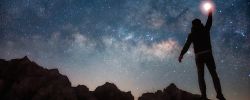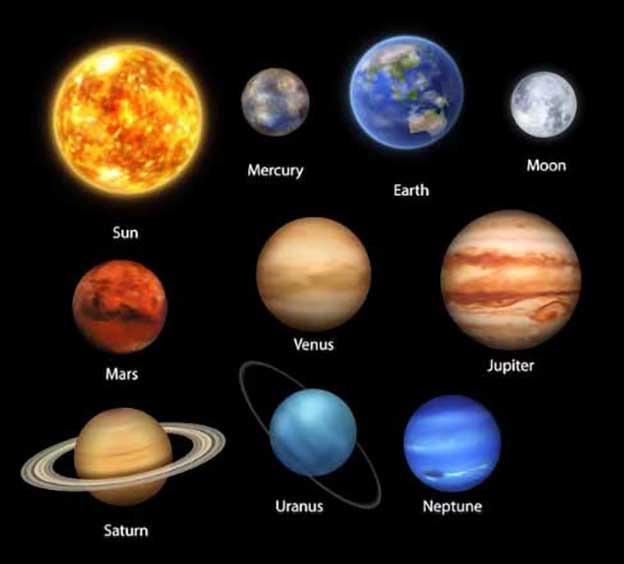Our Neighbours
Planets are celestial bodies that orbit stars in our solar system. They revolve around the Sun. These intriguing neighbours come in a variety of sizes, compositions and characteristics, that we continue to try and learn about.
| Planet | About |
|---|---|
| Mercury | the planet closest to the sun, there is no atomsphere to retain heat so temperatures vary drastically. From what we know, the surface features include craters and plains. |
| Venus | known as Earths twin sister due to similar characteristics including size and composition. Venus has a thick atompshere composed mostly of carbon dioxide and the surface features include volcanoes and vast plains. |
| Mars | known as the "Red Planet" due to its iron oxide-rich surface. Mars has the largest volcano and cayon in the solar system (Olympus Mons and Valles Marineris). There is evidence to suggest that liquid water existed on its surface in the past, we have collected this information through exploration missions such as Mars rovers and lander. |
| Jupiter | the largest planet in our solar system, Jupiter is mostly composed of hydrogen and helium. Notable for its Great Red Spot, a massive storm. |
| Saturn | known for its spectacular ring system, which is composed of ice particles and rocks. Saturn is the second largest planet in our solar system. |
| Uranus | Tilted on its side, with a rotational axis almost parallel to its orbit. This planet has a faint ring system and a bluish-green colour due to the methane in its atomsphere. |
| Neptune | a similar size and composition to Uranus, the dynamic atomsphere with high-speed winds and dark storm systems. Neptune was discovered through mathematical predictions before being observed. |
Did you know?
You can see planets with the naked eye. Planets are often brighter and don't twinkle like stars. They move against the background of stars over time. Venus is the brightest planet you can view with the naked eye. However if you are fortunate enough to view through a telescope, Mars has a red tinge to it, and on a clear night you may see the mountains/ volcanoes of Mars. You can also view the rings of Saturn and the moons of Jupiter through a telescope.

